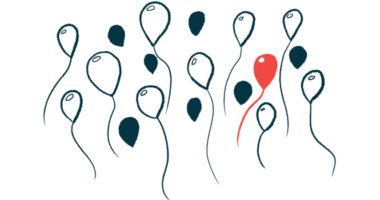Genetic test leads to diagnosis of boy with atypical Angelman symptoms
Researchers encourage early diagnosis for better patient outcomes

Despite having few signs and symptoms of Angelman syndrome (AS), an infant boy was eventually diagnosed by genetic testing as a result of his nonspecific developmental delays and unexplained low muscle tone, according to a case study.
“This report is a good example for giving clinicians a lower threshold for the suspicion and diagnosis of AS,” researchers wrote. “This can potentially lead to an earlier age of diagnosis and better outcomes for AS patients.”
The report, “A Case Study of Early Diagnosed Angelman Syndrome: Recognizing Atypical Clinical Presentations,” was published in the Cureus Journal of Medical Science.
Most Angelman patients diagnosed between 9 months and 6 years of age
Angelman syndrome is a rare genetic disorder characterized by symptoms such as developmental delays, motor problems, speech abnormalities, seizures, and excessive excitability, with frequent laughing, smiling, and gesturing.
Distinctive physical signs include coarse (distinctive) facial features, a flat back of the skull, a prominent lower jaw, and a smaller-than-normal head circumference. These features usually develop within the first three years of life. Scoliosis, or curvature of the spine, is also a common Angelman feature.
While symptoms typically present as young as 6 to 12 months of age, most patients are diagnosed between 9 months and 6 years of age, with many cases being mistaken for other conditions with similar symptoms.
Researchers at the University of the Incarnate Word School of Osteopathic Medicine, in Texas, described the rare case of a newborn boy who showed developmental delays but few signs of Angelman.
“Our patient has a relatively uncommon presentation of AS,” the researchers wrote.
The boy was born without complications but experienced a 9.3% weight loss by two days of age. One month later, he was admitted to the hospital due to a failure to thrive and an inability to gain weight, despite nursing on demand with expressed breast milk.
The patient was examined by a pediatric gastroenterologist who found no anatomical or physiologic abnormalities of the digestive system. The parents were instructed to use formula only, which helped the baby to gain weight.
Regardless, the boy did not meet developmental milestones for his age at two, four, and six months. At two months, he was unable to smile socially, and at four months, he could only partially roll over. Doctors suspected the boy would have developmental delays, so he received physical and speech therapy.
Boy was referred to neurologist and underwent genetic testing
At nine months, the boy was diagnosed with global developmental delay and low muscle tone (hypotonia), and by 13 months, he was referred to a neurologist.
Coarse facial features were noted upon physical examination. However, there was no evidence of other features consistent with Angelman, including tongue protrusion, flat skull, prominent lower jaw, small head circumference, tremor-like movements, or excessive laughter.
Despite low muscle tone in the upper and lower extremities, the boy had normal strength and reflexes, and full range of motion. No history of seizures was noted, and brain MRI scans showed no signs of abnormalities, such as wasting (atrophy), bleeding, or fluid build-up.
The “onset of seizures, which presents in 75% of AS patients before the age of three, was also absent in this patient,” the team noted.
Genetic testing was ordered due to unexplained low muscle tone, which revealed a genetic mutation that causes Angelman. His family was informed about the diagnosis and future complications, and despite therapy, the boy made slow progress.
“Diagnosing AS early is challenging due to nonspecific symptoms and increased likelihood of misdiagnosis with other common genetic conditions,” the researchers concluded.
“This case study suggests that pediatricians should have a low threshold of suspicion for diagnosis of AS when infants present with nonspecific symptoms such as failure to thrive, hypotonia, and global developmental delay,” they added.







